#isabella duchess of Bourbon
Text
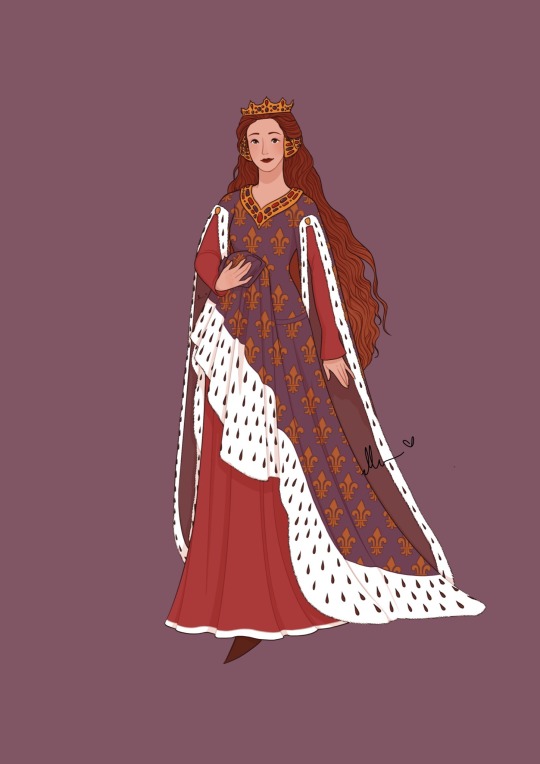
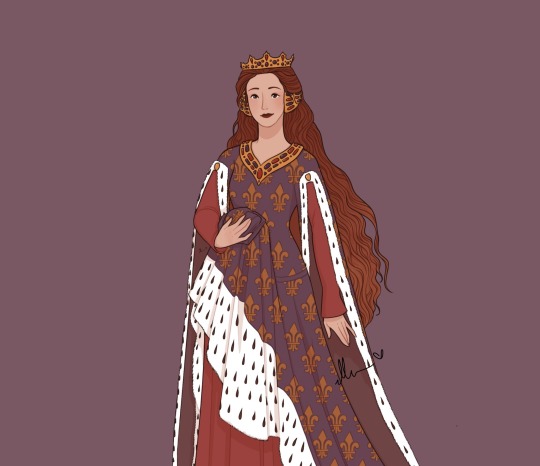
Isabella of Valois, Duchess of Bourbon
Or… at least a medieval lady based on an image of her. The princess hair is as ever… something I can’t help myself from including.
Isabella (1313 – 26 July 1383) was the Duchess Consort of Bourbon from 1336-1356, after her husband died she "took the veil" (aka became a nun). And this illustration is based off an image of her (supposedly - it's one of those things where I found the image inspiring first and then looked up who it's apparently of so grain of salt as per usual). I had quite a bit of fun with this one, and now that tiktok is recommending costume breakdowns of HoD... it's got the gears starting to turn. BUT I have something else I've started so I have to do that first and see how they do.
I am the artist! Do not repost without permission and credit. Find me over on instagram at ellen.artistic
#historical fashion#ellenart#lnart#character design#costume design#historically inspired#historical costuming#redesigning heroines#isabella duchess of Bourbon#medieval princess#1300s
346 notes
·
View notes
Text
"queer people didn't exist in the 18th century, and especially not in the royal families" ...
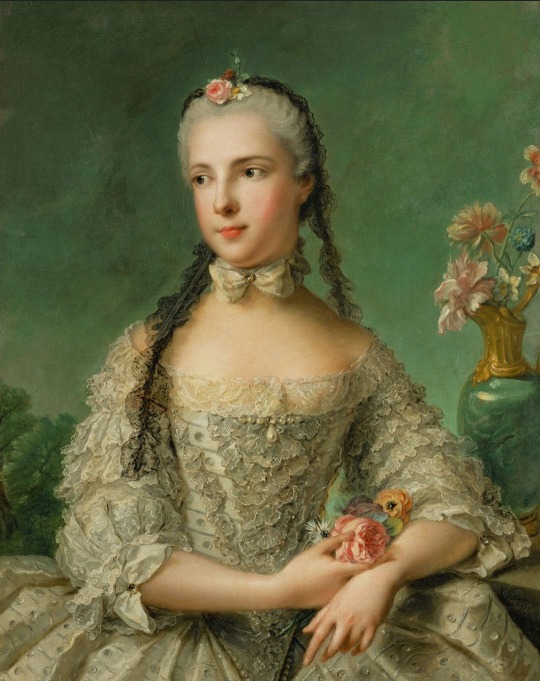
Isabella of Bourbon-Parma
married to Joseph II, Holy Roman Emperor in 1760 to 1763 while simultaneously being in an affair with his sister until her own death in '63 Maria Christina, Duchess of Teschen. quotes of various letters she dedicated to her lover:
“I am told that the day begins with God. I, however, begin the day by thinking of the object of my love, for I think of her incessantly.”
“My consolation, I am madly in love with you, virtuously or diabolically, I love you and I will love you to the grave.”
#lesbian#queer history#Isabella of Bourbon-Parma#isabella of parma#and btw her husband and lover were both siblings of Marie Antoinette#i actually love her even tho i just found put about her but i already know I'm going to be obsessed with her#history#queer#wlw#wlw history
419 notes
·
View notes
Photo
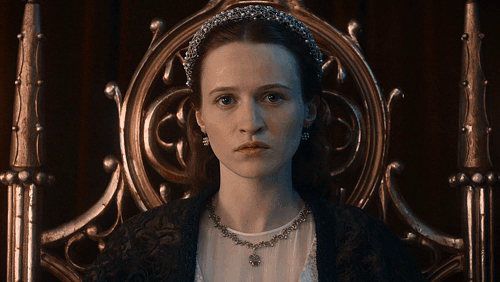




MARY OF BURGUNDY, THE RICH
Duchess of Burgundy, countess of Flanders, and archduchess of Austria, who fought to save her land from France and preserved what was to become the modern country of Belgium.
In Mary of Burgundy's days, Burgundy encompassed the area surrounding Dijon, Flanders, Picardy, and Brabant. It bordered France, Austria, and the English territories in the northeast part of continental Europe. The future of Burgundy was of utmost importance in the ongoing struggle for power between England and France, as well as in the many smaller conflicts throughout central and northern Europe. Mary's father, who was to be remembered as Charles the Bold, was the count of Charolois. Her grandfather, known as Philip the Good, reigned as the duke of Burgundy. Mary's mother was Isabelle of Bourbon , the second wife of Charles. His first wife Catherine de France had died young, with no children; Mary of Burgundy was therefore the sole heir to a large and rich territory.
Since Charles had no male heirs, potential marriages with Mary of Burgundy were plotted almost from the day of her birth on February 13,1457. Her entrance into the world was celebrated in a grand style, and her baptism at the cathedral of Coudenberg was considered "the greatest magnificence ever seen for a girl." This elegance may have been due to the political position of the child, or it simply may have been expected of the stylish House of Burgundy. Whatever the reason, the festivities lasted an entire day, and Louis of France, later to rule as King Louis XI, was appointed as Mary's godfather. Mary's grandmother, Isabella of Portugal (1397–1471), filled the role of godmother. Gifts were brought by representatives from across Europe, including some from a number of cities which were in rebellion against Duke Philip the Good at the time.
Mary of Burgundy spent most of her childhood at the ducal castle of Ten Waele at Ghent. She enjoyed an affectionate relationship with her father, even though he was almost constantly away from her. Especially after 1465, when Charles became the duke of Burgundy, he was personally involved in controlling and governing the cities of his territory. He also developed a flair for conquering new cities, and military operations kept him occupied for months at a time. Isabelle of Bourbon died when Mary was eight years old, and the girl was raised primarily by Lady Hallewijn, the wife of the duke's chief steward. Lady Hallewijn was a constant companion and loyal attendant to Mary throughout her life. Several cousins and other children from noble families lived with the heiress as playmates during her childhood. Mary's great-aunt (possibly Agnes of Burgundy) was responsible for arranging the series of governesses that educated the young lady. Not much is known about Mary's education, but it is clear that she could speak French, Flemish, and English. She enjoyed reading fables and Roman histories, and may have had some training in political philosophy. Her later actions as reigning duchess suggest that she was prepared early in life to govern.
Mary developed a keen interest in hunting, riding, and other outdoor sports, as well as in gardening. She cared for her falcons as if they were children; later in life, her husband would express surprise at Mary's insistence on keeping the birds in the bedroom, even within a few days of their wedding. Mary's personal seal was a picture of herself on horseback with a falcon on her wrist. She had a complete court of attendants from her infancy, including a dwarf named Madame de Beauregard.
Mary soon made her choice among the many suitors for her hand by selecting Archduke Maximilian of Austria, the future Holy Roman Emperor Maximilian I, who became her co-ruler. The marriage took place at Ghent on 19 August 1477, when she was 20 years old, while he was two years younger. Mary's marriage into the House of Habsburg initiated two centuries of contention between France and the Habsburgs, a struggle that climaxed with the War of the Spanish Succession bethween 1701 and 1714.
When they had time, the couple indulged themselves with dancing, hunting, music and the love for animals. Mary tried to teach him iceskating, which he struggled to master. They read romances together. Contrary to the custom of the time, Mary and Maximilian shared the same private quarters and bedroom. Mary nursed their children herself and used to dine with merchants from Dijon. She entusiastically cheered for her husband during tournaments, in which he exceled in jousting, not just in feats of strength but also in the luxury he lavished on the equipments, horses, accessories and ornaments. At first, they talked to each other in Latin. With Maximilian by her side, Mary's position became stronger, politically and militarily. Although he came with no money nor army, nor support from the Empire, and no prior experience in governance, his competence in military matters and his prestige as the son of an emperor boosted the stability of her territories. He took over the war effort, concerning both military and financial details.
In 1482, a falcon hunt in the woods near Wijnendale Castle was organised by Adolph of Cleves, Lord of Ravenstein, who lived in the castle. Mary loved riding and was hunting with Maximilian and knights of the court when her horse tripped, threw her in a ditch, and then landed on top of her, breaking her back. She died several weeks later on 27 March from internal injuries, having made a detailed will. She was buried in the Church of Our Lady in Bruges on 3 April 1482. She was pregnant at the time.
Maximilian was devastated. She had initially hidden the extent of her injury to calm him down. When he continued to display uncontrollable grief, she had to force him out of her chamber so that she could discuss matters of the state with her vassals, concerning which she asked them to keep their loyalty oath to him and their children. Maximilian was not present when she said her last words.
#mary of burgundy#house of habsburg#habsburg#maryandmaximilliam#duchyofburgundy#historicalwomen#history#european history#royal women
28 notes
·
View notes
Text
Thread about Joanna of Castile: Part 6: The Princes’ Journey : Juana of Castile and Philip of Burgundy Visit the French Court, 1501
In this part of my thread, I will provide further information about Joana's first stop in France.
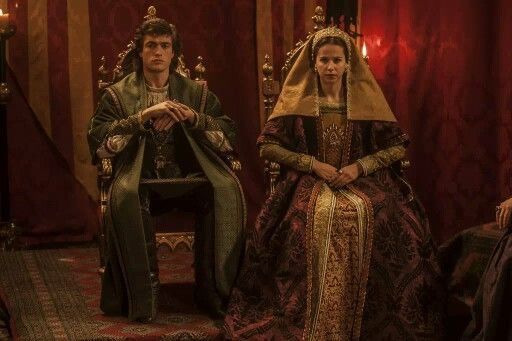
Like I previously said in my last thread, In 1501, Philip of Burgundy and Juana of Castile became the heirs of the kingdoms of Castile and Aragon. This new status required them to appear in constitutional ceremonies in the principal cities of Spain and before the ‘Cortes’ to witness the swearing of oaths to them ùas heirs.


The route they would take was the subject of controversy. Juana’s parents, Ferdinand and Isabella, were insisting they take a sea voyage from Flanders to Spain. A new Spanish envoy, Juan Rodríguez de Fonseca, bishop of Córdoba, reported that:
Juana seemed eager to serve her parents and was widely thought to be “very sensible (cuerda) and very level-headed (asentada).
Philip’s advisors stipulated an overland route through France. The matter was settled in August 1501 when Philip agreed to marry his son Charles to Claude, the eldest daughter of King Louis XII of France and his queen, Anne of Brittany. Philip expressed an interest in meeting his prospective daughter-in-law, and when King Louis heard this, he invited Philip and Juana to visit the French royal court at Blois on their way to Spain.
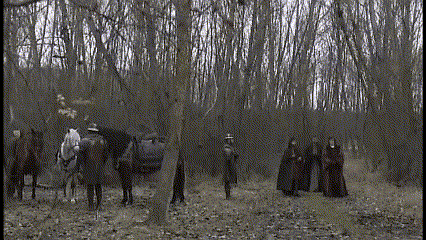
The children were placed with Margaret of York and Anne of Burgundy in Mechelen, and Philip signed new household ordinances for the journey.
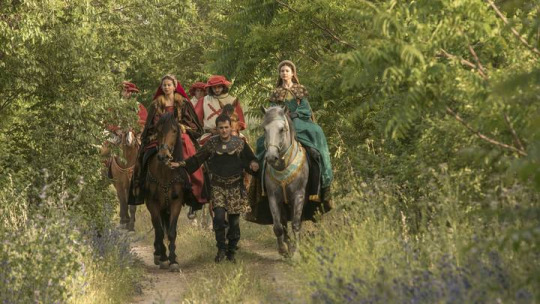
There are several vivid accounts of the journey. The princes left Brussels on 4 November 1501, travelling until Mons with Margaret of York and down through France to Blois. Philip delighted in detours, but Juana, more aloof and withdrawn, preferred the straighter route.
Queen Anne sent Madame de Vendôme along with fourteen women to wait on Juana while she travelled from one town to the next. Juana made an official entry into Valenciennes on November 9 where she was given two silver pots and a bowl covered with flowers of gold by the inhabitants.

Philip and Juana made their official entry into France on November 16 where they were met with immense receptions. They arrived in Paris where a grand banquet was given for the couple that included engaging maidens, drink, spices, sweets, and dancing. Juana left after one night to make her way to the castle of Blois. Philip stayed in Paris four more days before joining her.

They arrived at Blois together on December 7, where they were housed in a newly built section of the palace which had been richly tapestried and furnished just for their visit. Philip went to meet King Louis with his retinue, accompanied by Pierre de Beaujeu, the Duke of Bourbon. He entered the king’s presence and bent down on his knee three times as he neared. Louis rose and doffed his cap at each bow, advancing and embracing Philip. The heir to the French throne, Francois d’Angouleme was seven years old, and he came forward to receive a kiss from Philip. It was Francois’ first appearance at a grand court occasion.
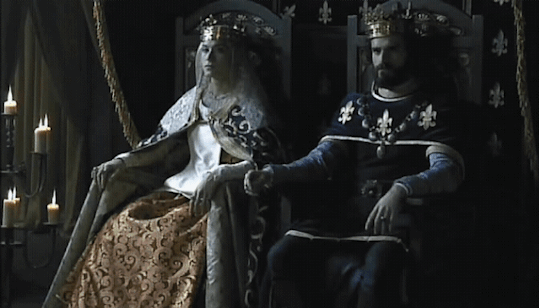

Juana was particularly intent on maintaining her status as the heir to the Spanish throne without offending her hosts. She was asked if she would kiss the King of France and would only agree after consulting her minister, the Bishop of Córdoba. The Bishop agreed a kiss was acceptable. Louis had insisted that Philip bow three times to him, but when Juana arrived, he rushed over to her, preventing her from curtseying twice.

The good-natured Louis then released her, courteously asking her to go to his wife, so the men could be alone together. Juana began making her way to the door where the Duchess of Bourbon was waiting for her to arrange her dress and take her to the Queen, but there was a crush of people preventing her from reaching the door. Then Philip came and pressed his way ahead of his wife, making the crowd even bigger and more raucous, causing further delay.
The rest of the journey will be posted in the next thread: Part 6.1.
5 notes
·
View notes
Text

The stars have aligned for royal fans and watchers. With Haven hosting this year's Women United (WU) conference, prominent women and speakers from various fields have touched down in the small country.

Spotted out in Haven's capital were not one, not two, but four royal women from different monarchies. Of course, they were surrounded by security - to the understanding and dismay of the eager public. With home turf advantage is Queen Freya. You know her. You love her. We here at Gossip Queen are obsessed with her.

Queens of our Hearts: Their Majesties, Queen Jade Bourbon-Rys & Queen Freya Ilvermorny
Then there's Her Majesty, Queen Jade (@lorirwritesfanfic). She may have married into the Cordonia royal family, but she has royal blood through her deceased father: Luis Fernando Bourbon, Crown Prince of Calenvia. (Fun fact: Queen Freya and Queen Jade are mothers of three adorable children, and their husbands are Kings named Liam. They are basically spiritual twins.)
The Duchess of Sessox made a surprise appearance. Well, not really a surprise. Meghan Tudor is an active supporter of all things involving women's empowerment and equality. We are surprised we saw her out and about.

Royal Beauties: Her Grace, Meghan Tudor, Duchess of Sessox & Her Majesty, Queen Isabella Beaumont Sánchez
Last but never least is Queen Isabella (@xxrainbow-princessxx), the reigning monarch of the Laurentia throne. This isn't Her Majesty's first visit to Haven. She was last seen in Volterra during Queen Freya's birthday last year.
We can't wait to see more from these extraordinary women.
Keep it here on Gossip Queen for more Pop Cultural news.
GQ ISSUE I | Royal Beginning | Previous | Next
#writing#oc story#ts4 story#fiction#stories#writer#ts4 screenies#sims 4 story#sims 4 edit#ts4#ts4 simblr#sims 4 royal family#ts4 royal legacy#ts4 royal family#writeblr#creative writing#royal media#gossip queen tabloid
4 notes
·
View notes
Photo

Renata of Lorraine or Renée de Lorraine (20 April 1544 – 22 May 1602) was by birth a member of the House of Lorraine and Duchess of Bavaria by marriage to William V, Duke of Bavaria.
Born in Nancy, France, she was the second child and eldest daughter of Francis I, Duke of Lorraine and Christina of Denmark. Her paternal grandparents were Antoine, Duke of Lorraine and Renée of Bourbon-Montpensier and her maternal grandparents were Christian II of Denmark and Isabella of Austria.
6 notes
·
View notes
Text

The family of Robert I, Duke of Parma. From left to right, first row: Immacolata, Antonia, Isabella, Duke Robert, Henrietta, Luigi, Gaetano, Duchess Maria Antonia, Renato, Zita (sitting on the far right). From left to right, second row: Francesca, Pia, Luisa, Adelaide, Teresa, Joseph, Xavier, Henry, Sixtus, Felix. Villa Pianore, 1906.
(via Zita of Bourbon-Parma - Wikipedia)
1 note
·
View note
Text
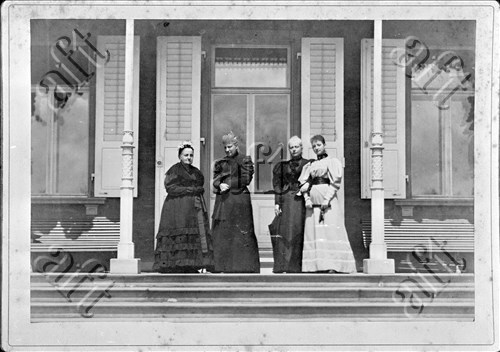
Four generations in 1890 at Villa Toscana, Lindau, Germany.
Maria Antonia Dowager Grand Duchess of Tuscany (1814-1898), Archduchess Maria Isabella Countess of Trapani (1834-1901), Princess Maria Antonietta Countess of Caserta (1851-1938) and Princess Maria Immaculata of Bourbon-Two Sicilies (1874-1947).
Source: catalogo.aft.it
Please don't remove the watermark.
#italian royal#italian royalty#tuscany#Princess Maria Immaculata of Bourbon-Two Sicilies#Princess Maria Antonietta of Bourbon-Two Sicilies#countess maria antonietta of caserta#Archduchess Maria Isabella of Austria#countess maria isabella of trapani#Princess Maria Antonia of the Two Sicilies#grand duchess maria antonia of tuscany#bourbon-two sicilies#1890#early 1890s#1890s
21 notes
·
View notes
Photo

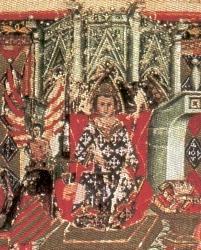


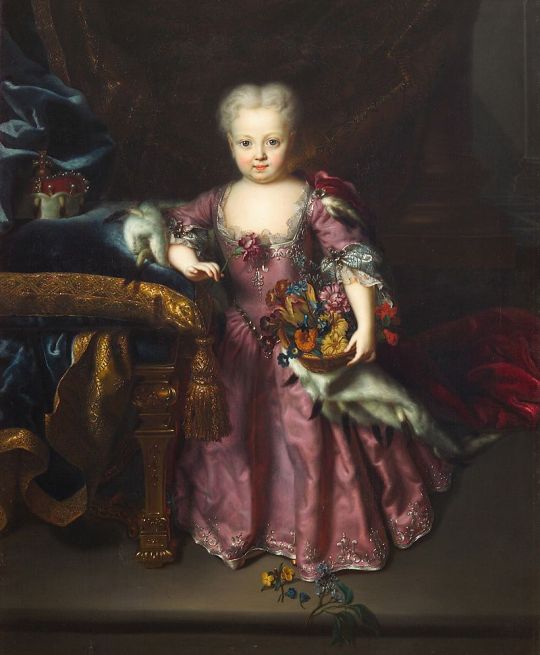
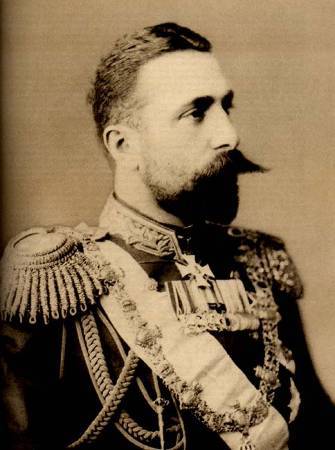

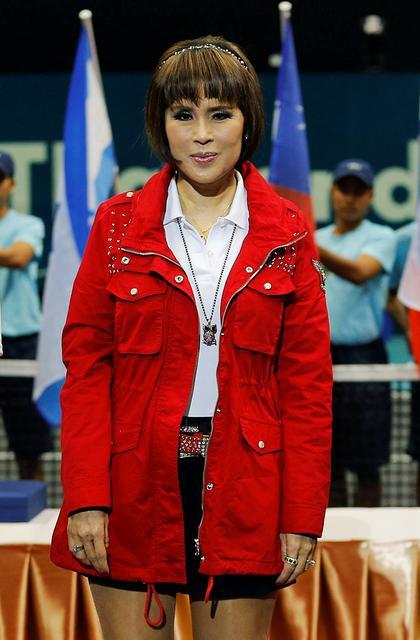
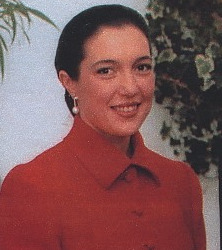

Royal Birthdays for today, April 5th:
Isabella of Hainault, Queen of France, 1170
James III, King of Majorca, 1350
Bianca Maria Sforza, Holy Roman Empress, 1472
Elizabeth of Sweden, Duchess of Mecklenburg-Gadebusch, 1549
Maria Amalia, Archduchess of Austria, 1724
Alexander of Battenberg, Prince of Bulgaria, 1857
Victoria of Hesse and by Rhine, Marchioness of Milford Haven, 1863
Ubol Ratana, Princess of Thailand, 1951
Maria Paloma of Bourbon-Two Sicilies, Archduchess of Austria, 1967
Camilla of Bourbon-Two Sicilies, Duchess of Castro, 1971
#Isabella of Hainault#maria amalia of austria#victoria of hesse#maria paloma of Bourbon-Two Sicilies#camilla of Bourbon-Two Sicilies#Alexander of Battenberg#Bianca Maria Sforza#james iii#Elizabeth of Sweden#elizabeth vasa#princess Ubol Ratana#royal birthdays#long live the queue
37 notes
·
View notes
Text


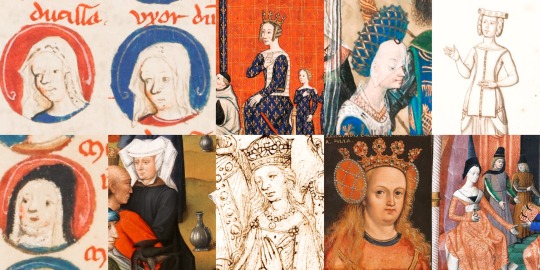
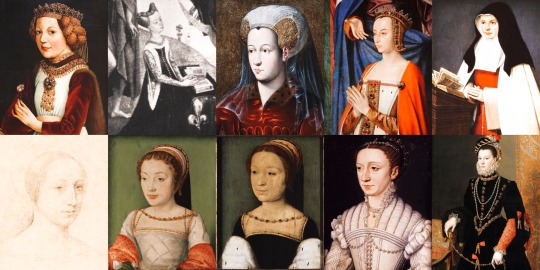
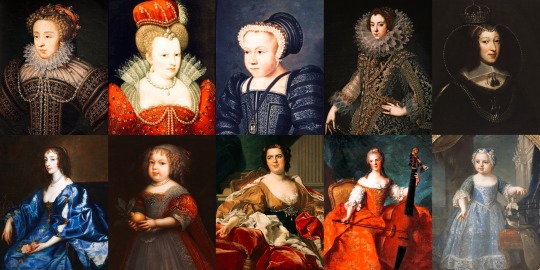

Every French princess ever
Other posts in this series: Every Queen of England ever, Every English princess ever, Every Queen of France ever
Rothilde - daughter of Charles the Bald and Richilde of Provence
Ermentrude - daughter of Louis the Stammerer and Ansgarde of Burgundy
Emma of France - daughter of Robert I and Beatrice of Vermandois (Queen consort of West Francia)
Emma of France - daughter of Robert I and Beatrice of Vermandois (Queen consort of West Francia)
Matilda of France - daughter of Louis IV and Gerberga of Saxony (Queen consort of Burgundy)
Hedwig of France - daughter of Hugh Capet and Adelaide of Aquitaine (Countess of Mons)
Gisèle of France - daughter of Hugh Capet and Adelaide of Aquitaine (Countess of Ponthieu)
Advisa of France - daughter of Robert II and Constance of Arles (Countess of Nevers)
Adela of France - daughter of Robert II and Constance of Arles (Duchess of Normandy, Countess of Flanders)
Constance of France - daughter of Philip I and Bertha of Holland (Princess of Antioch, Countess of Troyes)
Cecile of France - daughter of Philip I and Bertrade de Montfort (Princess of Galilee, Countess of Tripoli)
Constance of France - daughter of Louis VI and Adélaide of Maurienne (Countess of Boulogne and Toulouse)
Marie of France - daughter of Louis VII and Eleanor of Aquitaine (Countess of Champagne)
Alice of France - daughter of Louis VII and Eleanor of Aquitaine (Countess of Blois)
Margaret of France - daughter of Louis VII and Constance of Castile (Queen consort of England, Queen consort of Hungary and Croatia)
Alys of France - daughter of Louis VII and Constance of Castile (Countess of Vexin, Countess of Ponthieu)
Agnes of France - daughter of Louis VII and Adela of Champagne (Byzantine Empress consort)
Marie of France - daughter of Philip II and Agnes of Merania (Duchess of Brabant)
Isabelle of France - daughter of Louis VIII and Blanche of Castile (Saint)
Isabella of France - daughter of Louis IX and Margaret of Provence (Queen consort of Navarre)
Blanche of France - daughter of Louis IX and Margaret of Provence (Infanta of Castile)
Margaret of France - daughter of Louis IX and Margaret of Provence (Duchess of Brabant)
Agnes of France - daughter of Louis IX and Margaret of Provence (Duchess of Burgundy)
Blanche of France - daughter of Philip III and Maria of Brabant (Duchess of Austria)
Margaret of France - daughter of Philip III and Maria of Brabant (Queen consort of England)
Isabella of France - daughter of Philip IV and Joan I of Navarre (Queen consort of England)
Joan II of Navarre - daughter of Louis X and Margaret of Burgundy (Queen regnant of Navarre)
Joan III of Burgundy - daughter of Philip V and Joan II of Burgundy (Countess of Burgundy and Artois)
Margaret I of Burgundy - daughter of Philip V and Joan II of Burgundy (Countess of Burgundy and Artois)
Isabella of France - daughter of Philip V and Joan II of Burgundy (Dauphine of Viennois)
Blanche of France - daughter of Philip V and Joan II of Burgundy
Blanche of France - daughter of Charles IV and Joan of Évreux (Duchess of Orléans)
Joan of France - daughter of Philip VI and Blanche of Navarre
Joan of Valois - daughter of John II and Bonne of Luxembourg (Queen consort of Navarre)
Marie of France - daughter of John II and Bonne of Luxembourg (Duchess of Bar)
Isabella of France - daughter of John II and Bonne of Luxembourg (Countess of Vertus)
Catherine of France - daughter of Charles V and Joanna of Bourbon (Countess of Montpensier)
Isabella of Valois - daughter of Charles VI and Isabeau of Bavaria (Queen consort of England, Duchess of Orléans)
Joan of Valois - daughter of Charles VI and Isabeau of Bavaria (Duchess of Brittany)
Marie of Valois - daughter of Charles VI and Isabeau of Bavaria
Michelle of Valois - daughter of Charles VI and Isabeau of Bavaria (Duchess of Burgundy)
Catherine of Valois - daughter of Charles VI and Isabeau of Bavaria (Queen consort of England)
Radegonde of Valois - daughter of Charles VII and Marie of Anjou
Yolande of Valois - daughter of Charles VII and Marie of Anjou (Duchess of Savoy)
Magdalena of Valois - daughter of Charles VII and Marie of Anjou (Princess of Viana)
Joan of France - daughter of Charles VII and Marie of Anjou (Duchess of Bourbon)
Catherine of France - daughter of Charles VII and Marie of Anjou (Countess of Charolais)
Anne of France - daughter of Louis XI and Charlotte of Savoy (Duchess of Bourbon)
Joan of France - daughter of Louis XI and Charlotte of Savoy (Queen consort of France)
Claude of France - daughter of Louis XII and Anne of Brittany (Queen consort of France, Duchess of Brittany)
Renée of France - daughter of Louis XII and Anne of Brittany (Duchess of Ferrara, Modena and Reggio)
Madeleine of Valois - daughter of Francis I and Claude of France (Queen consort of Scotland)
Margaret of Valois - daughter of Francis I and Claude of France (Duchess of Berry, Duchess of Savoy)
Elisabeth of Valois - daughter of Henry II and Catherine de' Medici (Queen consort of Spain)
Claude of Valois - daughter of Henry II and Catherine de' Medici (Duchess of Lorraine)
Margaret of Valois - daughter of Henry II and Catherine de' Medici (Queen consort of France, Queen consort of Navarre)
Marie Elisabeth of France - daughter of Charles IX and Elisabeth of Austria
Elisabeth of France - daughter of Henry IV and Marie de' Medici (Queen consort of Spain, Queen consort of Portugal)
Christine of France - daughter of Henry IV and Marie de' Medici (Duchess of Savoy)
Henrietta Maria - daughter of Henry IV and Marie de' Medici (Queen consort of England)
Marie Thérèse - daughter of Louis XIV and Maria Theresa of Spain (Madame Royale)
Louise Élisabeth of France - daughter of Louis XV and Marie Leszczyńska (Duchess of Parma, Piacenza and Guastalla)
Henriette of France - daughter of Louis XV and Marie Leszczyńska
Marie Louise of France - daughter of Louis XV and Marie Leszczyńska
Marie Adélaïde de France - daughter of Louis XV and Marie Leszczyńska (Duchess of Louvois)
Victoire of France - daughter of Louis XV and Marie Leszczyńska
Sophie of France - daughter of Louis XV and Marie Leszczyńska (Duchess of Louvois)
Thérèse of France - daughter of Louis XV and Marie Leszczyńska
Louise of France - daughter of Louis XV and Marie Leszczyńska (Saint)
Marie-Thérèse - daughter of Louis XVI and Marie Antoinette (Queen consort of France)
Sophie of France - daughter of Louis XVI and Marie Antoinette
Sophie d'Artois - daughter of Charles X and Maria Theresa of Savoy
Louise of Orléans - daughter of Louis Philippe I and Maria Amalia of Naples and Sicily (Queen consort of the Belgians)
Marie of Orléans - daughter of Louis Philippe I and Maria Amalia of Naples and Sicily (Duchess of Württemberg)
Clémentine of Orléans - daughter of Louis Philippe I and Maria Amalia of Naples and Sicily (Princess of Saxe-Coburg and Gotha, Duchess of Saxony)
#french history#catherine of valois#claude of france#henrietta maria#elisabeth of valois#historical women
33 notes
·
View notes
Photo

The intrigues of Don Carlos did much to render the life of the Queen Regent of Spain uneasy. Before her marriage she won terms of intimate friendship with him, his mother, an Arch-Duchess of Austria-Este-Modena, having been a sister of her mother's first husband.
The Duke of Madrid is said to have been very much enraged when he heard of the betrothal of the Arch-Duchess Marie-Christine to King Alphonso XII of Spain, his hated rival. He was on terms of enmity with Queen Christine during her Regency, and redoubled his efforts to secure the throne of Spain for himself and his descendants.
The whole quarrel about the Spanish succession arose from the fact that the father of the ex-Queen Isabella altered the line of succession for the sake of his daughter (he had no son); and by putting an end to the Salic Law, which up to that time had held good in Spain, he placed his eldest daughter on the throne in the place of his brother, who would have otherwise succeeded him. Don Carlos is descended from this brother, and he carries on the feud, and is considered by quite half the population of Spain to be their rightful king. Even of those, however, who regard his cause as just, many do not wish to upset the present dynasty.
His Royal Highness was married for the first time to the Princess Margareta of Bourbon-Parma, by whom he had one son and four daughters. His present wife, the Princess Bertha Rohan, is not of equal birth with him; and though she bears the title of Duchess of Madrid, it is not likely that she would ever be received as Queen of Spain should her husband succeed in his efforts.
The daughters of the Duke are all married except the unfortunate Princess Elvira whose sad story is well known. Her fate is surrounded by mystery. Some people blame her, and others say that the friendship is purely platonic on both sides.
Don Jaime de Bourbon, the only son of the Duke, holds a commission in the Russian Army, and went lately with the troops to China. There he, however, fell ill with typhus, and had to return home invalided without having seen much active service.
- Lady’s Realm, 1902
15 notes
·
View notes
Photo
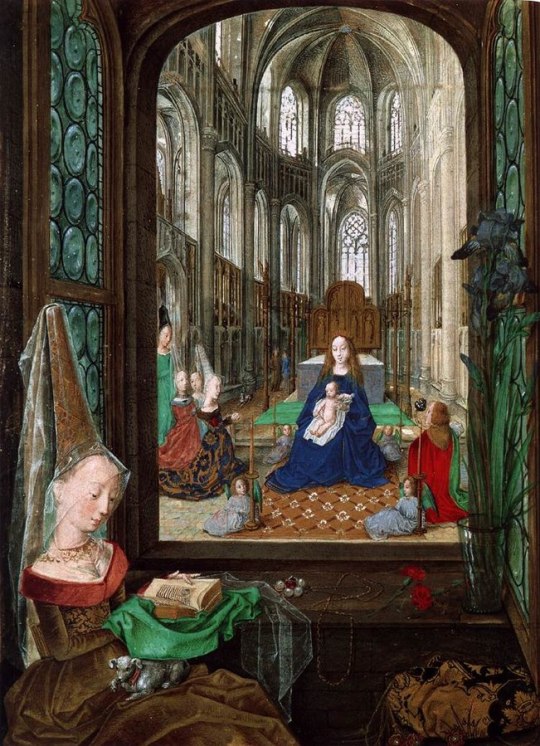
Master of Mary of Burgundy - Hours of Mary of Burgundy Virgin and Child - 1477
Mary (French: Marie; Dutch: Maria; 13 February 1457 – 27 March 1482), Duchess of Burgundy, reigned over the Burgundian State, now mainly in France and the Low Countries, from 1477 until her death in a riding accident at the age of 25.
As the only child of Charles the Bold, Duke of Burgundy, and his wife Isabella of Bourbon, she inherited the Burgundian lands upon the death of her father in the Battle of Nancy on 5 January 1477. She spent most of her reign defending her birthright; in order to counter Louis XI's appetite for her lands, she married Maximilian of Habsburg, who long after her death became Maximilian I, Holy Roman Emperor. The marriage was a turning point in European politics, leading to a French–Habsburg rivalry that would endure for centuries. Owing to the great prosperity of many of her territories, Mary was often referred to as Mary the Rich.
The Master of Mary of Burgundy was a Flemish illuminator, painter and draughtsman active between 1469-1483 in Flanders, probably in Ghent. His notname is derived from two books of hours attributed to him, the Vienna Hours of Mary of Burgundy and another books of hours, now in Berlin, also for Mary of Burgundy.
He was influenced by advances in oil on canvas panel painting, especially the works and approach of Hugo van der Goes, and may have been also a painter himself. His illuminations are characterised by a tendancy towards a dark palette,[2] an aesthetic favoured by the court of the time, as well as innovative uses of trompe-l'œil devices in both his miniatures and border decorations. While a relatively small number of works have been attributed to him, the master is seen as one of the chief innovators of late 15th century manuscript illumination.
30 notes
·
View notes
Text
King Pedro V’s 5th sibling: Infanta Maria Ana de Portugal

Born: 21st August 1843 Necessidades Palace, Lisbon, Portugal
Died: 5th February 1884 (aged 40) Dresden, Saxony
Infanta Maria Ana of Portugal (Maria Ana Fernanda Leopoldina Micaela Rafaela Gabriela Carlota Antónia Júlia Vitória Praxedes Francisca de Assis Gonzaga) (21st August 1843 – 5th February 1884) was a Portuguese infanta (princess), the eldest surviving daughter of Queen Maria II of Portugal and her King consort Fernando II of Portugal, a member of the House of Bragança.
After her mother's death in 1853, when Maria Ana was just ten years old, she became the leading lady of the court, until her older brother, King Pedro V of Portugal, married Princess Stephanie of Hohenzollern-Sigmaringen,

in 1858. Although in the early stages of their acquaintance the two sisters-in-law had a good relationship, in a letter written in 1859 to Prince Albert of Saxe-Coburg and Gotha,

when Stephanie was already dead, King Pedro mentions that his sister made unflattering comments regarding his wife "because of her feminine vanity caused by a lower status (...)"
The relationship between the sisters-in-law seems to have had its ups and downs since Stephanie's arrival in May 1858 and Maria Ana's wedding in May 1859. The Queen wrote about her sister-in-law: "She is, in every respect, the one who is more like Pedro (...)", "She is a charming person, good, generous, remarkably sensible for her age, with no trace of selfishness, respected and loved by all of us (...) George of Saxony has discovered a true gem. She is happy and loves him, but she cannot talk about the moment in which she will leave her family without crying. What is certain is that she will leave a terrible emptiness behind". Maria Ana's brother, Pedro, also claims during this time that his sister is "the pearl of our family circle", in a letter to Prince Albert.
She married in Lisbon at the Belém Palace on 11th May 1859 Prince George of Saxony (1832–1904),

second son of King John I of Saxony,

a kinsman from the Catholic Albertine branch of her father's Wettin dynasty. Queen Stephanie tried to organize a brilliant ceremony, but, in the end, the wedding was quiet and went unnoticed in both Portugal and Saxony. The newly-weds spent their first days as a married couple at Belém Palace. During their short stay in Portugal after the ceremony, Prince George left a poor impression with the Portuguese Royal Family, as he "barely talked to the bride" and did not attend a theater performance to which he had been invited. During that same performance, 15-year-old Maria Ana was seen crying. The couple left to Saxony on May 14th. Maria Ana was not allowed to take Portuguese ladies-in-waiting with her and was only accompanied by her brother Luís
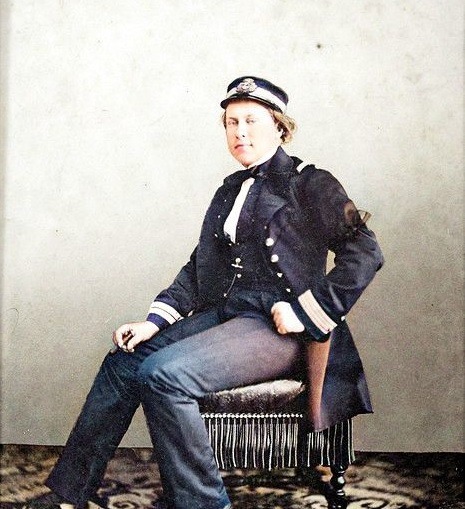
in the journey. Pedro V wrote the following regarding the wedding: "the wedding of my sister to Prince George of Saxony was celebrated with more pomp than happiness. The former is followed by a regretful fate, as he left no sympathies and people who met him often left with a poor impression."
The marriage was not a happy one, according to Historian Eduardo Nobre who claims that the Prince "did not live up to the expectations and qualities of the Portuguese Infanta". Despite their issues, they had eight children.
Although she renounced her claims to the Portuguese throne when she married, Maria Ana could still become Queen if the male line became extinct. This situation nearly happened in 1861, when King Pedro V and two of her other brothers died from Typhoid Fever and left no children. However, this hypothesis was completely put aside when her brother, King Luís I, married Princess Maria Pia of Savoy
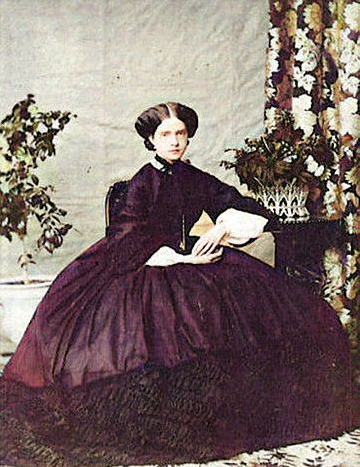
and had two sons, the future King Carlos I

and Infante Afonso.
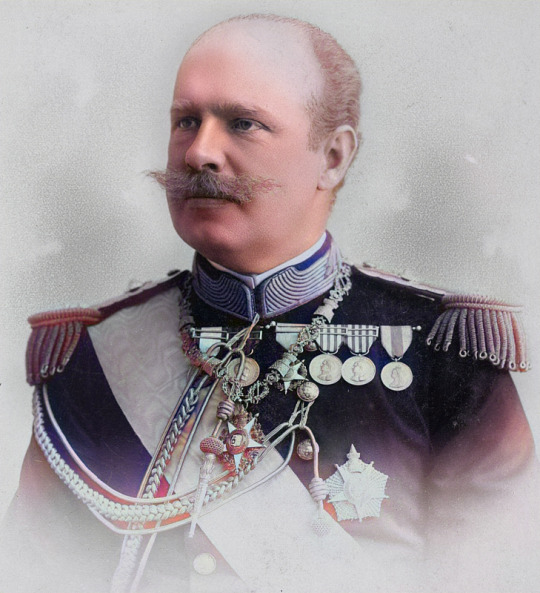
Despite everything, it's not likely that Maria Ana ever gave this hypothesis great importance because of her troubled marriage and many children.
Around 1883, her youngest son, Prince Albert of Saxony,

became seriously ill. Maria Ana took care of him for several months until he recovered. This effort would be fatal, as the Infanta died from exhaustion, on 5th February 1884, before her husband became King. Her husband would remain unmarried for the rest of his life.
In Portugal, her second brother Luís I soon succeeded her eldest brother Peter V as king.
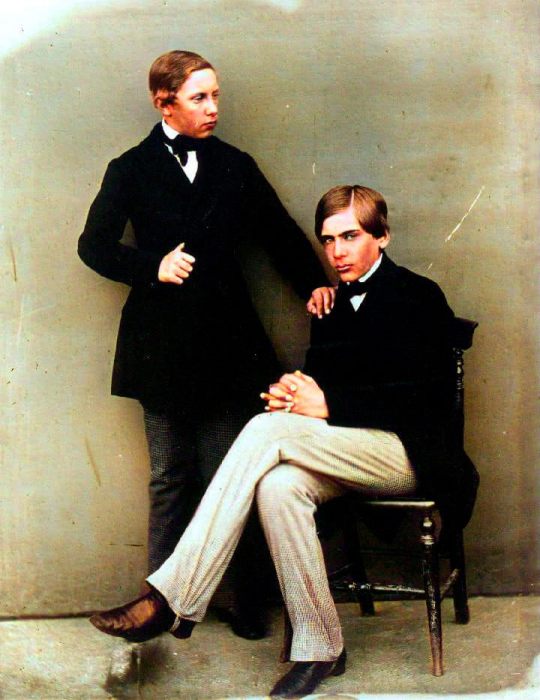
Her husband's elder brother Albert

succeeded her father-in-law as King of Saxony and gradually it became clear that he and his wife Carola of Vasa

were not able to have children of their own. Maria Ana's eldest son would almost certain to one day succeed to the throne.
Marie Johanna Amalie Ferdinande Antonie Luise Juliane, (19th June 1860 - 2nd March 1861), died in childhood, no issue
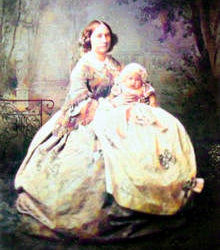
Elisabeth Albertine Karoline Sidonie Ferdinande Leopoldine Antonie Auguste Clementine (14th February 1862 - 18th May 1863) died in childhood, no issue
Mathilde Marie Auguste Viktorie Leopoldine Karoline Luise Franziska Josepha (19th March 1863 - 27th March 1933) died unmarried, no issue
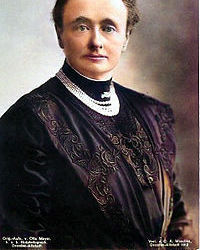
Frederick Augustus Johann Ludwig Karl Gustav Gregor Philipp (25th May 1865 - 18th February 1932)

married Princess Louise of Tuscany (1870–1947),
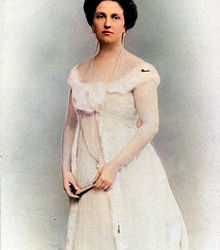
later divorced, had issue
Maria Josepha Luise Philippine Elisabeth Pia Angelica Margarethe (31st May 1867 - 28th May 1944)

married to her cousin second degrees Archduke Otto Franz of Austria (1865–1906),
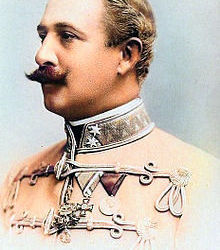
had issue
Johann Georg Pius Karl Leopold Maria Januarius Anacletus (10th July 1869 - 24th November 1938) married first Duchess Maria Isabella of Württemberg (1871–1904) and second Princess Maria Immaculata of Bourbon-Two Sicilies (1874–1906)

Maximilian Wilhelm August Albert Karl Gregor Odo (17th November 1870 - 12th January 1951) ordained as a priest, died unmarried, no issue
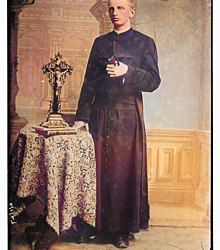
Albert Karl Anton Ludwig Wilhelm Viktor (25th February 1875 - 16 September 1900) died unmarried, no issue.

Princess Maria Ana predeceased her father Fernando, her husband George, and her brother-in-law King Albert of Saxony. In 1902 George succeeded his childless brother as king, and on his death in 1904 Maria Ana's eldest son became King of Saxony as Frederick Augustus III.
#infanta maria ana de bragança#house of bragança#queen maria ii of portugal#king consort fernando ii#king pedro v of portugal
11 notes
·
View notes
Photo







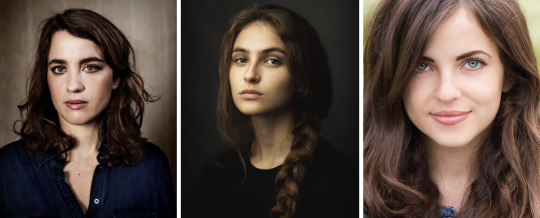
Granddaughters of King Henry IX and Queen Isabella
Daughters of Charles, Prince of Wales
Charlotte, Queen Elizabeth III of the United Kingdom
Mary, Princess of the United Kingdom, Princess of Ligne, Princess of Mountbatten-Windsor
Daughters of Albert, Tsar Alexander IV of Russia
Alexandra, Grand Duchess of Russia, Crown Princess of Norway, Princess Imperial of Russia, Princess of the United Kingdom, Princess of Mountbatten-Windsor
Nadia, Grand Duchess of Russia, Princess of the United Kingdom, Princess of Orleans, Princess of Mountbatten-Windsor
Irina, Grand Duchess of Russia, Crown Princess of Sweden, Princess of the United Kingdom, Princess of Mountbatten-Windsor
Xenia, Grand Duchess of Russia, Crown Princess of Denmark, Princess of the United Kingdom, Princess of Mountbatten-Windsor, Countess of Monpezat
Daughters of Mary-Astrid, Princess Royal
Ingeborg, Princess of Sweden, Duchess of Västmanland, Princess Bernadotte
Dagmar, Princess of Sweden, Duchess of Småland, Princess of Romania
Daughters of Princess Elisabeth
Marie-Valerie, Princess of Liechtenstein, Countess de Limburg Stirum
Marie-Beatrix, Princess of Liechtenstein, Princess of Nassau
Daughter of Princess Alice
Margaretha, Princess of Nassau, Princess of Bourbon-Parma, Princess of Liege
Yolande, Princess of Nassau, Princess of Bourbon-Parma, Countess de Lannoy
Daughters of Robert, Duke of Sussex
Maria-Christina, Princess of Sussex, Princess of the United Kingdom, Princess of Mountbatten Windsor, Princess of Monaco
Maria-Carolina, Princess of Sussex, Princess of the United Kingdom, Princess of Belgium, Princess of Mountbatten Windsor
Maria-Antonia, Archduchess of Austria, Princess of Sussex, Princess of the United Kingdom, Princess of Mountbatten Windsor
Maria-Anna, Hereditary Grand Duchess of Luxembourg, Princess of Sussex, Princess of the United Kingdom, Princess of Mountbatten Windsor
Daughters of Nicholas, Duke of Clarence
Joanna, Princess of Clarence, Princess of Mountbatten-Windsor, Countess de Limburg Stirum
Gabriella, Princess of Clarence, Princess of Belgium, Princess of Mountbatten-Windsor
Sophia, The Princess of Monaco, Princess of Clarence, Princess of Mountbatten-Windsor
Daughter of Joseph, Duke of Suffolk
Stephanie, Princess of Suffolk, Princess of Nassau, Princess of Bourbon-Parma
Daughters of Michael, Duke of Kendal
Anastasia, Princess of Kendal, Princess of Denmark, Countess of Monpezat
Victoria, Princess of Kendal, Princess of Romnia
Isabella, The Queen of Spain
Augusta, Princess of Kendal, Countess of Monpezat
7 notes
·
View notes
Photo
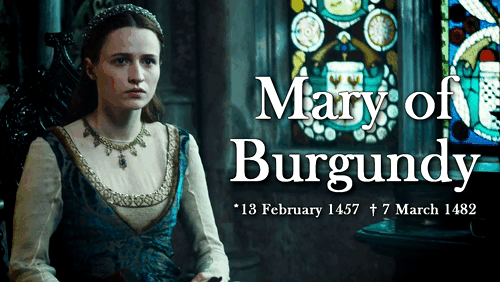



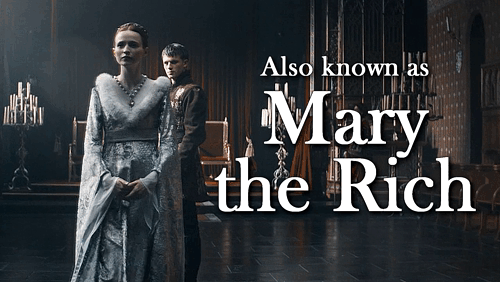

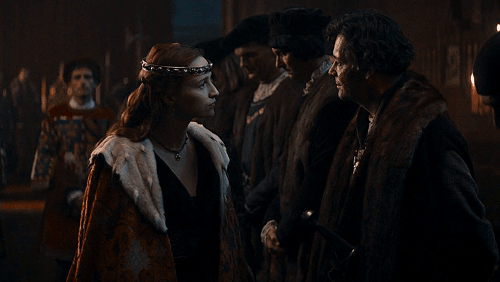
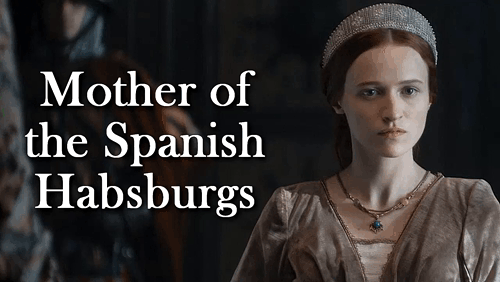


House of Valois & of Habsburg: Mary, The Duchess of Burgundy
Mary was born as the only child of Charles the Bold, The Duke of Burgundy, and his second wife Isabella of Bourbon. Although celebrated lavishly, neither her grandfather nor her father took part in her christening. Her godparents were her paternal grandmother Infanta Isabella of Portugal and King Louis XI. of France, at the time still The Dauphin of France.
For the first six years of her life, she lived with her parents. But when her father became The Governor of Holland, he moved with his wife but without his daughter there. Mary was sent to Ghent to prevent further riots of the citizens there. She was raised bilingual in French and Flemish but always prevered French. Mary received a formal education befitting that of a princess but was never prepared to rule as her parents still hoped for a male heir. This hope ended when Isabella of Bourbon died in 1465. The marriage of Charles and Margaret of York, which happened in 1468, resulted in no further children, keeping Mary as the sole heir.
Margaret, who was only eleven years older than Mary, became one of young woman’s most trusted advisors and friends. Their relationship was described as sisterly. Margaret also taught her stepdaughter the English language.
In 1467, Mary’s grandfather died and her father became The Duke of Burgundy. The 10-year-old Mary was his only living child and became his heir presumptive. Because of that and the wealth the House of Burgundy controlled, she was an interesting marriage candidate. Already five years prior a marriage between the future king of Aragon, Ferdinand II, and her was proposed. Charles, The Duke of Berry - the younger brother of Mary’s godfather King Louis XI of France - approached her as well as Nicholas, The Duke of Lorraine, who was killed in battle in 1473.
The question of a husband would reappear when Mary succeeded her father at the age of only twenty. Her godfather seized the opportunity of a defenseless Mary and invaded great parts of her country. Louis XI presented himself as a patron saint for Mary and demanded of her to marry his only seven-year-old son and heir Charles. Mary also felt pressure from within her country. Only a month after her accession, she had to grant the Great Privilege to her citizens. It included that she had no right to declare war, make peace, or raise taxes without the consent of the provinces and towns and only to employ native residents in official posts.
Mary’s only chance for regaining control was to marry and she did. Archduke Maximilian of Austria, The Holy Roman Emperor’s only son and heir. With their marriage on August 19th, 1477, he became the co-ruler of Burgundy. The couple had three children of whom the two oldest survived into adulthood: Philip the Handsome and Archduchess Margaret of Austria. Philip would later become the first Habsburg king of Castile through his marriage to Queen Joanna “the Mad” of Castile. He was the founder of the Spanish branch of the House of Habsburg. Margaret would marry twice, first becoming The Princess of Asturias and second The Countess of Savoy. Later, she was made the governess of the Habsburg Netherlands by her father after her brother’s death.
Mary of Burgundy died on March 7th, 1482, at the age of only 25 due to injuries she suffered after falling from her horse during a falcon hunt. With her death, her inheritance went to the House of Habsburg through her son Philip. This would lead to a brewing conflict between France and Spain in the following 200 years. If she had not died young, she would have gone on to become Holy Roman Empress through her husband Maximilian I.
// Christa Théret as Mary of Burgundy in Maximilian - Das Spiel von Macht und Liebe
#perioddramaedit#period drama#mary of burgundy#historyedit#historic women#15th century#european history#1400s#house of habsburg#house of valois-burgundy#maximilian - das spiel von macht und liebe#female rulers#austrian history#royal women of austria#House of Valois
535 notes
·
View notes
Photo

Isabella of Valois (1313 – 26 July 1383) was a Duchess of Bourbon by marriage to Peter I, Duke of Bourbon. She was the daughter of Charles of Valois by his third wife Mahaut of Châtillon.
3 notes
·
View notes